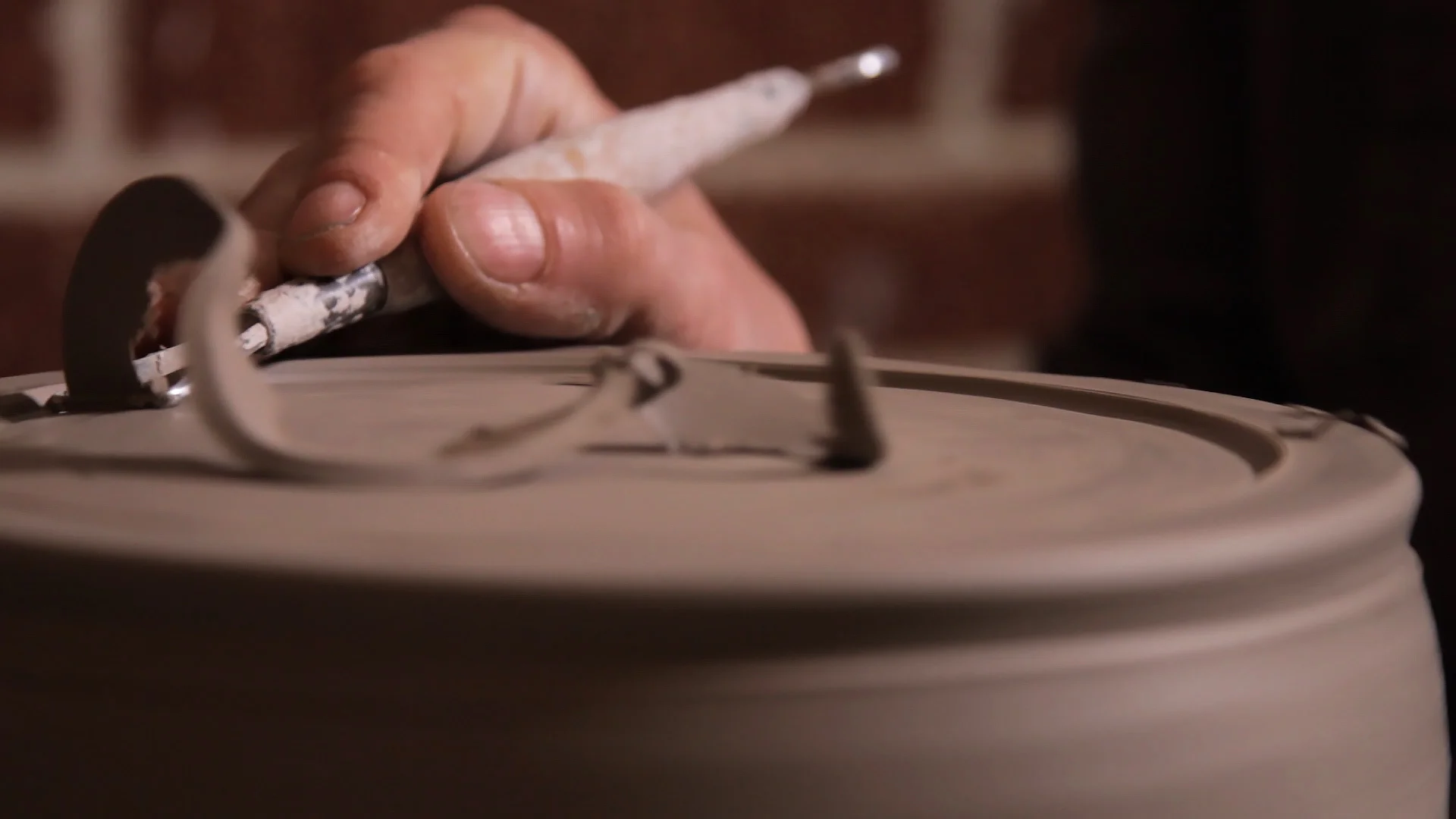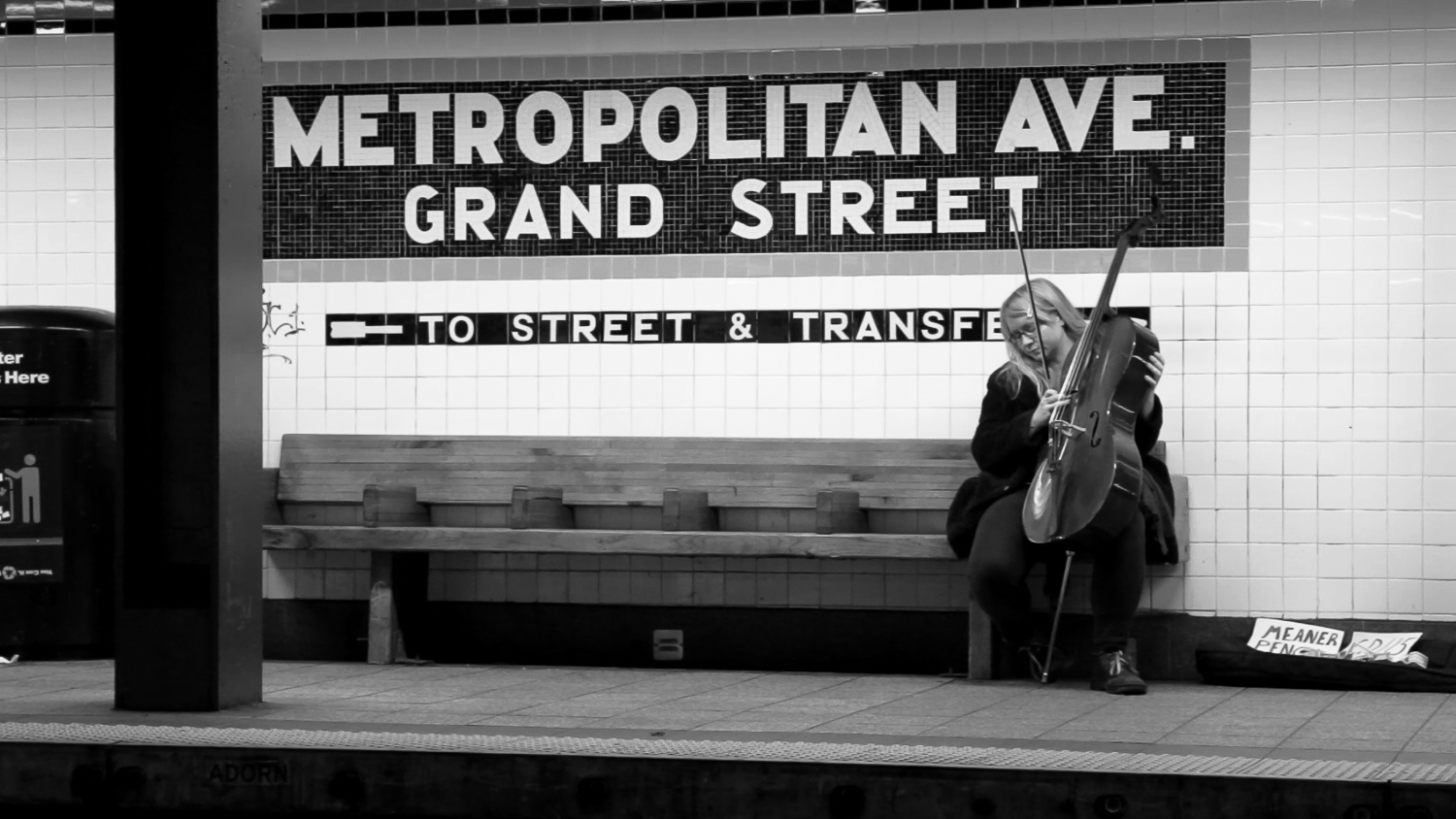"I like starting out with a lump of dirt and turning it into to something that, at best, will transform space and change the way people feel about doing everyday things."
Press the play button to watch the video.
We flew into Nashville from NYC and found ourselves in the midst of a country music festival. Live music seemed to be streaming from every open doorway, and judging by the number of pedal-powered bicycle bars cruising around town, we could tell it was going to be a rowdy night. After a bit of exploring and happy bellies full of barbeque, we called it a night because we had to be up early in the morning to meet up with Amy Potter.
Amy’s studio is in a beautiful valley, two hours east of Nashville, not far outside of Liberty, Tennessee. She moved here from Virginia after finding a community of like-minded people. The area afforded the ability to live close to the land, and it took a strong pioneering spirit to raise two sons and make the life that she has today. “Moving here was my instinct to reinvent the wheel and see what a sustainable life would look like. I didn’t have electricity for five years, and we milked cows so we had fresh milk everyday.”
Eventually she discovered ceramics and learned to throw on a wheel. She and some friends built a wood-fired kiln, located where she used to milk cows. These days, she primarily uses electric kilns, but they still use the wood-fired kiln at least once a year, which provides an opportunity to experiment with techniques like salt glazing. “There’s definitely a potters’ community around here. Tennessee Tech is around the corner, and they have the craft center. A lot of potters have come here to work and take classes and have ended up staying.”
Amy makes tableware, fermenting crocks, sinks, and custom tiles. When she is not making things out of clay, she also teaches yoga and martial arts. Every year, during Memorial Day weekend, she helps organize the annual Crazy Owl Retreat, named in honor of a late friend. You can reach Amy through her website amypotter.com, or find her on Facebook and Instagram. She also sells her work in Nashville at the Frist Center for Visual Arts. Amy will be opening her studio to visitors as part of the Off the Beaten Path Studio Tour from October 23-25, 2015.
We found out about Amy’s work while we were searching for fermenting crocks. If you have ever tried to make wild fermented foods, you know there are a few problems that can arise when fermenting in plain old glass jars. Lids often don’t seal properly. Ideally, a lid will keep oxygen from entering into your ferment while also allowing gases to be released. Also, veggies often float to the top of the brine where they can mold when exposed to that oxygen. A well-designed crock solves those problems by incorporating a weight to keep the veggies submerged under the brine and has an airlock lid which, when filled with water, prevents oxygen from getting into the ferment.
We picked up two of Amy’s crocks when we visited her studio. They have been a great addition to our kitchen and have been happily bubbling away since we returned home. Using crocks is truly much easier, and we’ve found ourselves fermenting much more since having them. For our first round of fermentation, using our new crocks, we decided to make a simple sauerkraut and some sour beets. Here’s the method we used to make the beets.
Recipe
3 lbs/1.4 kg peeled beets
1 jalapeno or serrano chile
4-6 cloves of garlic
4 qt/3.8 L water
195 g non-iodized salt
2 bay leaves
2 tsp black peppercorns
2 tsp caraway seeds
First, give your crock and all your tools a good washing. Make sure that all your tools are made of non-reactive materials like ceramic, wood, stainless steel, or food grade plastic. Next, go ahead and mix the salt and water to make the brine. Blend the chile and garlic with a cup of the brine and mix back into the rest of the brine. An inexpensive kitchen scale is a good way to take the guess work out of this part of the process. If you don’t have a scale you can use the basic ratio of 1 tbsp coarse salt to one cup of water, this is about a 5.4% ratio of salt to water. You can adjust the amounts in the recipe up or down, but just make sure to keep the salt to water ratio the same.
Peel and wash your beets. We cut ours in half to help speed up the fermentation process. Alternatively, you could shred them up with a grater to make a sort of beet kraut.
The spices and herbs you use will help infuse additional flavor into your beets, and it’s one of the most enjoyable places to experiment. We went with bay leaf, caraway seeds, black peppercorns, and dill. Lightly roast the bay leaf and spices in a dry pan to reawaken their flavors. We tied these up in a little cheesecloth bag before adding them to the crock along with the dill. You could just as easily grind them up, or toss them in whole.
Set the weight on top of the beets, and gently fill the crock with brine. Make sure the weight is covered by at least an inch or two of brine. Set your lid into the airlock rim and fill with water. Keep your crock out of direct sunlight in a place that stays comfortably in the 60-70℉ range. The water in the rim will slowly evaporate, so make sure to check it every day or two and top off as needed. After a month we transferred the beets into a glass jar and put them in the refrigerator, which lowers the temperature and slows the fermentation. Time is another great way to experiment with flavor when fermenting foods. If it isn’t sour enough for you after a month, give it a few more days and test it again. Don’t throw away any excess beet brine. You can do all kinds of things with this beautiful deep red liquid. We used ours to make watermelon rind pickles, and pickled eggs.











































































